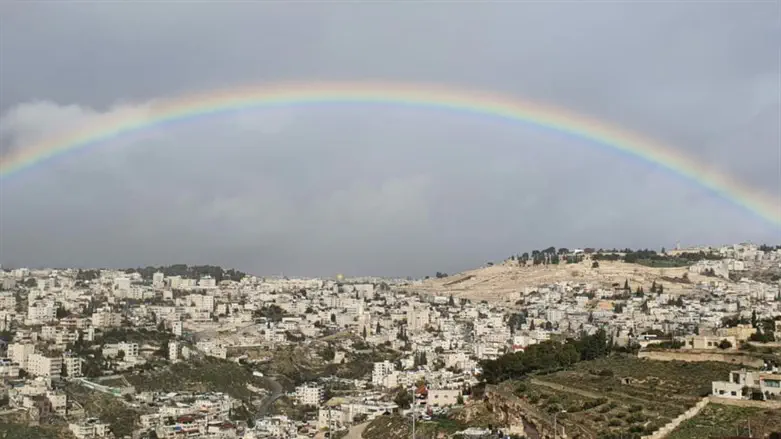
For generations, the exact location designated by Hashem for the Beis Hamikdash remained shrouded in mystery, known only as 'מקום אשר יבחר' - 'the place that Hashem will choose' in the Torah. The question then arises: how and when was the site finally revealed?
The revelation of this site unfolded during the times of David Hamelech, and the remarkable account is found in the concluding chapters of Shmuel II (Ch. 24) and Divrei Hayamim I (Ch. 21). While the plague of that era is widely known, the details surrounding its cessation and the lessons it imparts often remain less explored. Let's delve into the lesser-known aspect of the story, focusing on how the plague was brought to an end.
The saga unfolds with David Hamelech conducting a census of the nation, an act that inadvertently angered Hashem. In response to this, a devastating plague swept across the land, tragically claiming the lives of thousands of people.
Hashem sent a Malach to Yerushalayim with a drawn sword. This Malach positioned itself near the threshing floor of Aravna Hayevusi on Har Hamoriah, signaling that this location held the key to ending the plague.
At this critical moment, the Navi Gad, instructed David to construct a mizbeach on Aravna's threshing floor. Following this directive, David Hamelech wasted no time in fulfilling this task. He built the mizbeach and brought korbanos upon it. He turned to Hashem in fervent prayer, beseeching Him to end the devastating plague that had befallen his people. Hashem heeded David's heartfelt prayers, and the plague that had ravaged the nation ceased.
In the wake of this event, David Hamelech realized that the site of the newly constructed mizbeach held a special significance. He understood that this place, in which he was granted forgiveness and his prayers were answered, was chosen by Hashem to be the site of the future Beis Hamikdash. Hashem revealed the site of the Mikdash in a manner that clearly demonstrated its intended role: facilitating closeness to Hashem.
This location was not merely selected at random; this was the very site of Akeidas Yitzchak. Moreover, this was where Adam, Kayin, Hevel, and Noach had all brought their korbanos. Indeed, it was also the precise spot from which Adam Harishon was created. As the Rambam writes:
"It is a tradition in everyone's hands that the place where David and Shlomo built the altar in the threshing floor of Aravna, is the place where Avraham built the mizbeach and bound Yitzchak upon it. This is the same place where Noach built [a mizbeach] when he left the ark. This is the mizbeach upon which Kayin and Hevel brought offerings. Adam Harishon offered a sacrifice there and from this place he was created. The sages said: 'Man was created from the place of his atonement.'" (Mishneh Torah, Hilchos Beis Habechira 2:2)
The story of how the site of the Mikdash was revealed not only shows the power of the Makom Hamikdash as a place where tefillos are answered and as a place of atonement, but it also highlights the crucial role korbanos play in enabling a deeper connection to Hashem.
The Radak provides an impactful insight. He cites a Midrash that the thousands who perished in the days of David Hamelech did so because they did not yearn for the Beis Hamikdash:
“All those thousands who fell in the days of Dovid fell because they did not demand [or yearn for] the Beis Hamikdash. Surely then, if those who did not have it in their days, and it was not destroyed in their days, died because they did not demand it, how much more so should we, for whom it had existed in our time and was destroyed in our time, [yearn for it]. Therefore, the elders and prophets instituted to pray three times every day, 'Restore Your Shechinah and Your kingdom to Zion, and Your service to Yerushalayim.'”
In this spirit, let us all show our deep desire for the Beis Hamikdash. May our collective yearning and tefilos merit us to see the Beis Hamikdash rebuilt, speedily in our days!
Yosef Meir Weinstockhas spent years learning in well known yeshivas, including the Yeshiva of South Fallsburg, the Brisker Kollel, and the Mir Yeshiva. He is a contributor to beishashem.org (which you might want to check out), and resides in Beit Shemesh.